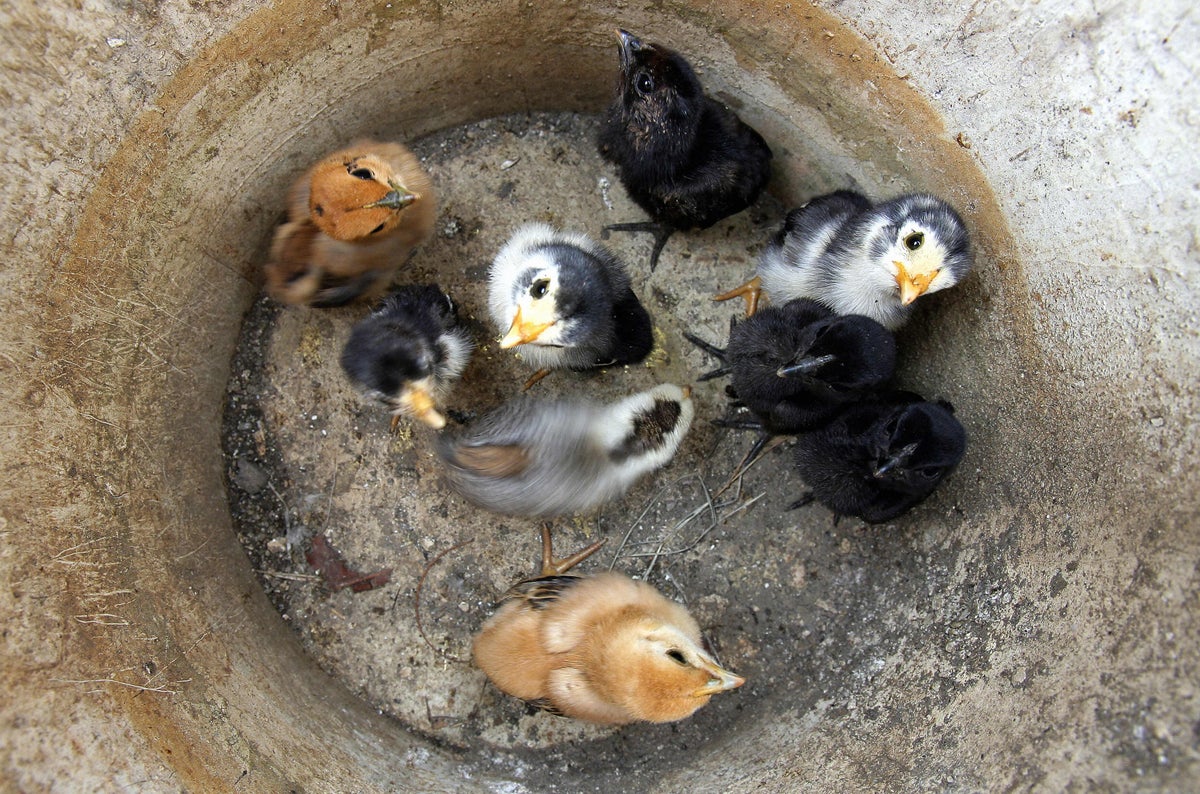
Scientists have invented a new method to determine the sex of yet-to-hatch chickens by “sniffing” chemicals on eggshells, an advance that could end the brutal practice of culling male chicks.
Most hatcheries across the world still sort chicks by their sex a day after they hatch, with male chicks being brutally culled immediately.
Some European countries have already banned male chick culling or plan to phase it out.
But if the sex of an egg is determined early on in incubation, billions of male eggs could be humanely diverted, said researchers including those from the University of California, Davis.
The new study, published in the journal PLoS One, demonstrated that it is possible to sort eggs by sex early in incubation, based on volatile organic chemicals emitted through egg shells.
The new invention detects volatile organic compounds (VOCs) given off by the developing embryo that diffuse out of the shell.
Scientists first assessed if there was a detectable difference in the chemicals given off by male and female embryos.
They initially developed a sensing chip technology to collect and analyse organic chemicals in the air.
Suction cups used for the industrial handling of eggs were then adapted to “sniff” air from the eggs without opening them.
The sex of the eggs was then confirmed by DNA analysis.
“We found that there are volatile chemicals from the egg, a scent that you can capture and sort statistically,” study co-author Tom Turpen said in a statement.
Scientists could use the new technology to identify male and female embryos at eight days of incubation with 80 per cent accuracy, based on two minutes of sampling.
Researchers noted that the presence of a class of volatile chemicals known as fatty acid esters, including isobutyl acetate, ethyl butyrate and isopropyl butyrate, could help define sex differences.
Other organic compounds, like decanal, m-cymene, d-limonene, b-thujene or tetradecane, were also listed for their sex differentiation ability.
“Our VOC-based method could correctly differentiate male from female embryos with more than 80 per cent accuracy,” researchers wrote in the study.
“There are abundant egg-derived VOCs that can be used to statistically classify embryos by sex, non-invasively, early in incubation with high confidence,” they noted.
Researchers believe the hardware platform invented at UC Davis could be integrated into hatcheries.
Scientists believe a rapid suction-cup sampling method could be developed to test a lot of eggs at the same time.
They hope to further develop high performance chemical sensor microchips integrated with routinely used egg handling machinery for determining the sex of yet-to-hatch chickens in the future.







